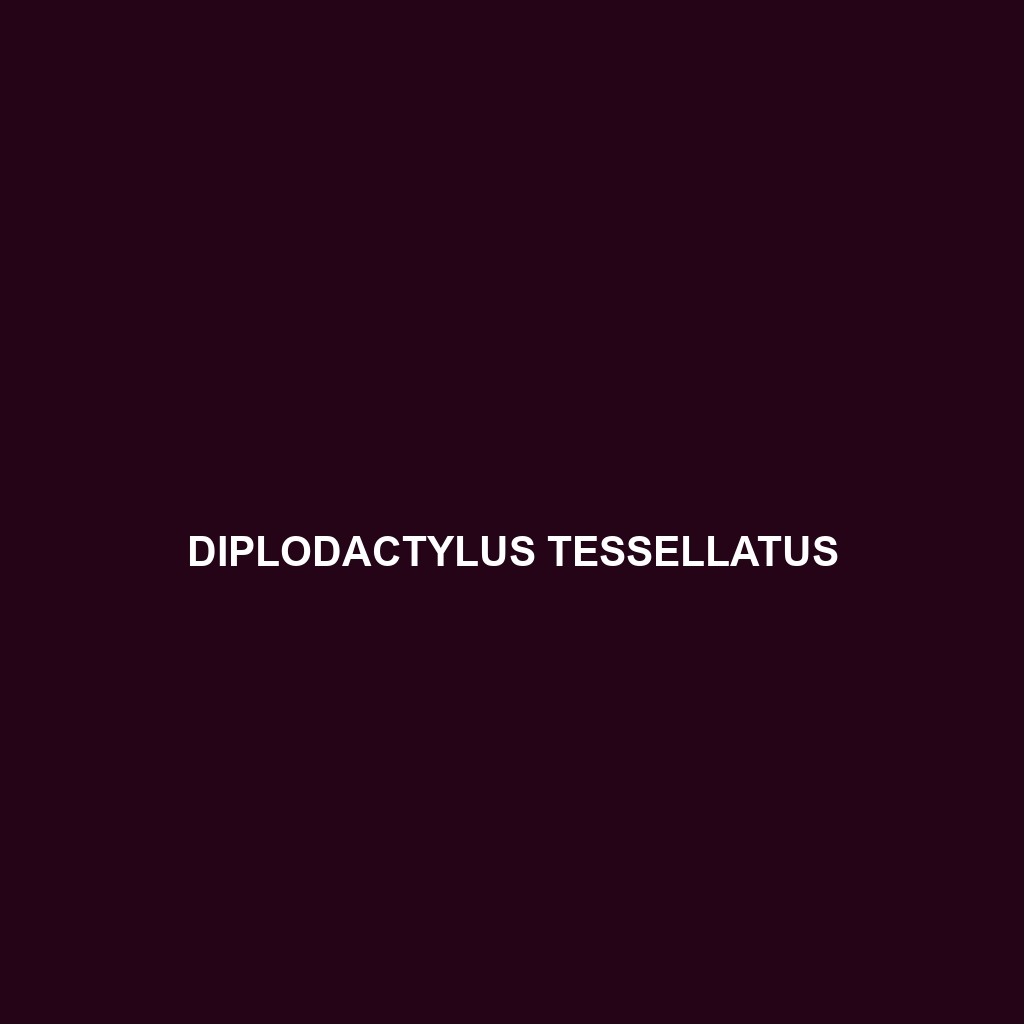Description of Diplodactylus tessellatus
Common Name: Diplodactylus tessellatus
Scientific Name: Diplodactylus tessellatus
Habitat: Diplodactylus tessellatus, commonly known as the tessellated gecko, is primarily found in the coastal regions of northeastern Australia. These geckos thrive in a variety of habitats including dry forests, rocky outcrops, and arid grasslands, favoring environments with ample shelter such as crevices in rocks and fallen logs.
Physical Characteristics: This species typically reaches an adult size of about 10 to 15 centimeters (4 to 6 inches) in length. Diplodactylus tessellatus exhibits a unique coloration featuring a mosaic of browns, greys, and creamy tones that provide excellent camouflage against its natural surroundings. Its body is flattened, with a broad head and a long tail that can regenerate if lost, a distinctive feature among geckos. The presence of small, granular scales adds to its identification attributes.
Behavior: Diplodactylus tessellatus displays predominantly nocturnal behavior, emerging at night to hunt and explore. They are known for their agility and adept climbing skills, which they utilize to navigate their rocky habitats. Vocalizations play a significant role in communication, particularly during mating seasons, and these geckos often display territorial behaviors, defending their chosen home sites from intruders.
Diet: The diet of Diplodactylus tessellatus consists mainly of insects and other small invertebrates. They actively hunt for prey such as crickets, moths, and beetles, showcasing their predatory skills. Their feeding habits also include foraging methods that involve using camouflage to ambush unsuspecting prey.
Reproduction: Reproductive activities for Diplodactylus tessellatus typically occur during the warm months of the year. Mating takes place in late spring, with females laying one to two eggs that are incubated in sheltered locations. The hatchlings are independent from birth and display many of the same physical traits as adults, making rapid adaptation to their environment possible.
Conservation Status: Currently, Diplodactylus tessellatus is classified as “Least Concern” according to the IUCN Red List. However, habitat loss due to urban development and agricultural expansion poses potential threats to its populations, prompting continued monitoring and conservation efforts.
Interesting Facts: One fascinating aspect of Diplodactylus tessellatus is its ability to change color slightly based on environmental conditions, which aids in camouflage. Additionally, these geckos can live up to 10 years in captivity, making them popular among reptile enthusiasts.
Role in Ecosystem: As both predator and prey, Diplodactylus tessellatus plays a crucial role in its ecosystem. By controlling insect populations, they help maintain ecological balance. Additionally, they serve as a food source for larger predators, including birds and snakes, contributing to the biodiversity and food web of their habitats.
